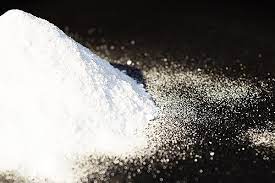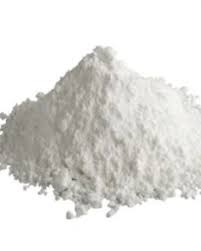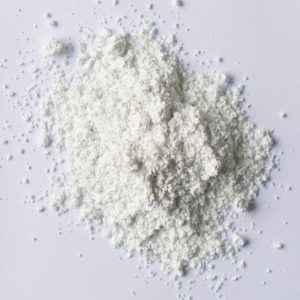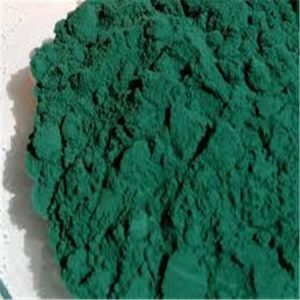Best Soda Ash Light Manufacturer (Sodium Carbonate)

What Is Soda Ash Light?
Light Soda Ash, an indispensable industrial chemical, takes center stage in various applications. Its sodium carbonate composition, exhibited as a white powder, holds remarkable properties that fuel diverse industries. This article delves into the extensive uses, unique grades, and physical characteristics of Light Soda Ash, shedding light on its importance in our daily lives.
Versatility and Applications:
- Glass Industry Marvel: Light Soda Ash plays a pivotal role in the glass industry, constituting about half of its consumption. It facilitates the production of flat glass for housing, commercial buildings, automotive industries, and container glass for consumer products. Its involvement extends to creating lighting, fiberglass insulation, glassware, and display screens.
- Cleaning Power: Embracing its role in cleanliness, Soda Ash is a fundamental ingredient in soaps, detergents, and cleaning products. Its application extends to laundry, where it acts as a water softener, ensuring the removal of hard water ions and enhancing the effectiveness of detergents.
- pH Regulation in Pools: In the realm of recreation, Light Soda Ash proves crucial for maintaining swimming pool pH levels. By increasing alkalinity, it ensures the proper pH balance of the water, contributing to a healthy and safe pool environment.
- Metallurgy and Beyond: Beyond everyday applications, Soda Ash finds its way into metallurgy, contributing to processes like removing phosphates and sulfurs from ores. It becomes a key player in recycling aluminum, zinc, and even finds applications in the production of lithium-based and lead-based batteries.
Grades and Their Significance:
- Soda Ash Light: This grade serves as a cornerstone in the production of detergents, chemicals, soaps, textiles, paper, food, and various sodium compounds. It caters to the casting industry and oil refineries.
- Soda Ash Dense: Preferred for glass manufacturing, this grade excels in creating flat glass, float glass, and container glass, showcasing its versatility in the glass industry.
- Soda Ash Feed Grade: Valued as a source of sodium in compound feeds, this grade also acts as a pH buffer, regulating the gastric and intestinal acid-base balance in animals.
- Soda Ash Dense Coarse Grade: Specifically designed for detergent production, this grade, with its selected granulation containing thicker fractions, finds its niche in the manufacturing process.
- Dense Compacted Grade: Obtained by crushing Soda Ash Light, this grade offers unique characteristics suited for specific processes and applications, showcasing its adaptability in various industries.
Physical and Chemical Properties:
- Particle Size and Density: Light Soda Ash presents an average particle size diameter (d50) ranging from 90 to 150 µm, while dense sodium carbonate falls within the 250 to 500 µm range.
- Melting and Boiling Points: With a melting point of 851°C, Sodium Carbonate decomposes when heated, and its inorganic nature prevents the determination of a boiling point.
- Solubility and Alkalinity: Highly soluble in water, Soda Ash exhibits strong alkaline properties, forming a clear solution. Its alkalinity contributes to its efficacy in various applications.
Sodium carbonate light properties:
- Synonyms: Soda ash; carbonic acid disodium salt; disodium carbonate; calcine soda;
- CAS No. 497-19-8
- EINECS No: 207-838-8
- Appearance: white fine powder
- Purity: 99% +
- Formula: Na2CO3
- Relative Density: 2.53 g/cm3
- Molar Mass: 105.99 g mol/1
- Melting point: 851 oC decomposes
- Solubility: Soluble in water 106 g/l at 20C
- pH: 12 at 106 g/l at 25C
Exploring the Diverse Roles of Sodium Carbonate (Best Soda Ash Light): Beyond the Ordinary
Revolutionizing Glass Manufacture:
Sodium carbonate takes the spotlight in the art of glassmaking, proving to be its linchpin. Subjected to intense heat alongside sand (SiO2) and chalk (CaCO3), it transforms, culminating in the rapid cooling process that births glass. This pivotal role underscores its significance as a foundational component.
Aqua Marvel in Pools & Spas:
Beyond its traditional roles, sodium carbonate emerges as a stalwart guardian in pools and spas. Acting as a robust base, it steps into the arena as a pH regulator, creating a stable alkaline environment vital for the optimal functioning of developing agents. Its ubiquity in municipal pools mitigates the acidic aftermath of chlorine, ensuring a balanced pH level.
Pool pH Mastery – A Science Unveiled:
In the realm of pool maintenance, sodium carbonate unveils its mastery as a pH increaser. Conducting a delicate dance with water pH levels, it orchestrates a balanced symphony. A mere 1000g infusion per 100m3 of pool water, dissolved in pristine water, administered with the pump and filters in motion, sets the stage. A patient two-hour wait, a retest, and if necessary, a repeat performance ensure a harmonious aquatic haven.
Taxidermy’s Artistic Alchemy:
Venturing into the realms of taxidermy, sodium carbonate proves to be an artist’s ally. Infused into boiling water, it orchestrates the delicate removal of flesh from skulls or bones, birthing the artistic marvel known as the “European skull mount.” Its applications extend to educational displays, breathing life into biological and historical studies.
Laboratory Luminary:
In the hallowed halls of chemical laboratories, sodium carbonate dons the mantle of a luminary. Its versatility shines as an electrolyte, conducting the symphony of electrolysis with finesse. Unlike chloride ions that birth corrosive chlorine gas, carbonate ions exhibit a benign nature towards anodes. Moreover, its solid, air-stable persona positions it as a primary standard in acid-base titrations, simplifying accurate measurements.
Laundry’s Softening Symphony:
Transforming the mundane chore of laundry, sodium carbonate emerges as a softening virtuoso. As a water softener, it banishes the stubborn grip of hard water ions, rendering additional detergents unnecessary. In the guise of Washing Soda, it becomes a savior in stores’ detergent sections, vanquishing oil, grease, and alcohol stains with ease.

Packaging:
We offer small and bulk packaging based on clients request. One ton block bottomed woven polypropylene bags PP
25 kg or 50kg woven polypropylene PP bags with inner polythene liner
Best Light Soda Ash Specification:
| CHEMICAL COMPOSITION | UNIT | MIN | MAX |
|---|---|---|---|
| Sodium Carbonate(Na2Co3) | %wt | 99.2 | 99.6 |
| Sodium Chliride(NaCl) | %wt | 0.5 | 0.7 |
| Sodium Bicarbonate (NaHCo3) | %wt | —- | 0.1 |
| Sodium Solfate(Na2So4) | %wt | —- | 0.05 |
| Iron(Fe) | ppm | —- | 50 |
| Loss on heating | %wt | —- | 0.2 |
| Moistore | %wt | —- | 0.2 |
| Ni | ppm | —- | 30 |
| Cr | ppm | 10 | |
| Mn | ppm | —- | 10 |
| Cu | ppm | —- | 30 |
| Characteristics | |||
| Total Alkalinity | %wt | 58.12 | 58.42 |
| Pouring Density | g/cm3 | 0.45 | 0.6 |
Conclusion:
In conclusion, Light Soda Ash emerges not just as a white powder but as a versatile and indispensable component of our daily lives. From shaping the glass in our windows to regulating the pH in our pools, its applications are diverse and impactful. Understanding its grades and properties unlocks the full potential of this chemical marvel, emphasizing its role as a fundamental building block in various industries.




Daniela (verified owner) –
Good quality.
Anna (verified owner) –
Fast and secure shipping.
Louis (verified owner) –
The delivery was so fast.
Freja (verified owner) –
All bags arrived in good shape
Anas (verified owner) –
Very fast delivery.
Ida (verified owner) –
Fast and secure shipping.
Mette (verified owner) –
Reliable chemical seller
Giulia (verified owner) –
Good service.
Mads (verified owner) –
Reliable chemical seller
Nickson (verified owner) –
Very fast delivery.
Erick –
Good quality.
Pierre (verified owner) –
All bags arrived in good shape
Jean (verified owner) –
Received all test certificates before shipment came
Anna (verified owner) –
All bags arrived in good shape